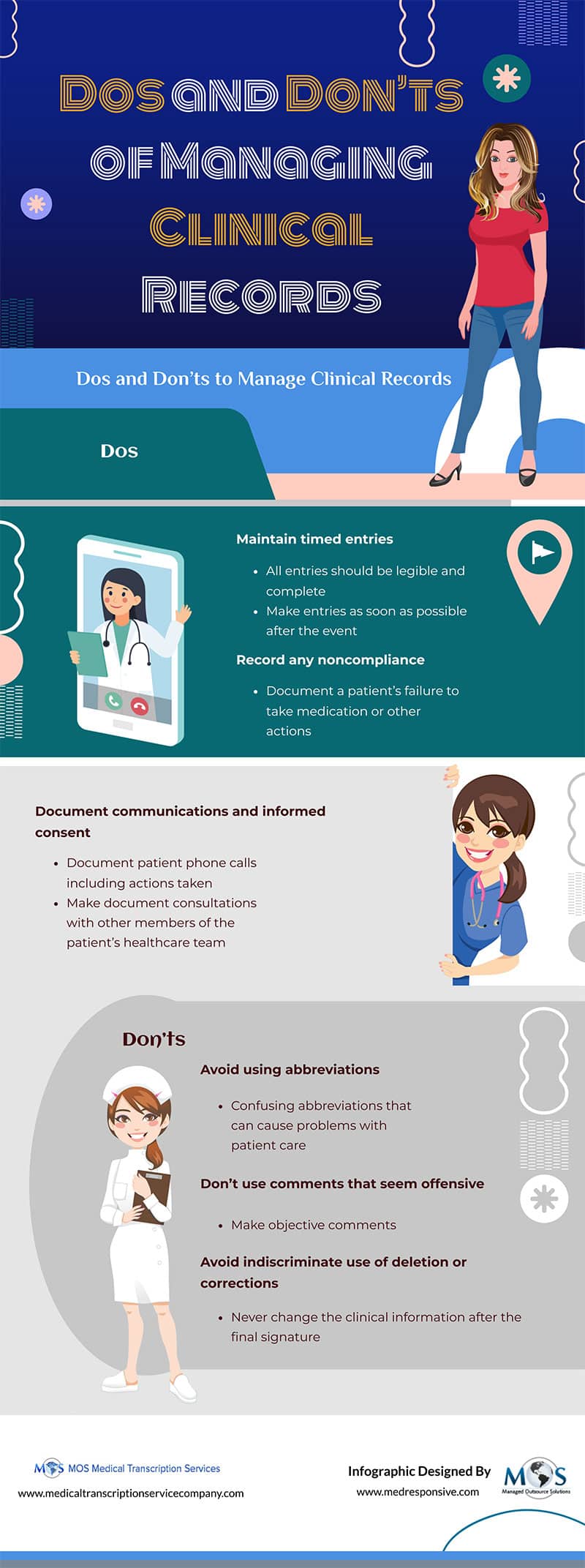Medical records are a fundamental element in the provision of patient care. Good clinical records aid – coordination and continuity of care, and informed decision making for patient management. It can also improve availability of data for malpractice litigation. Patient records should be updated at each care episode. Physicians can rely on medical transcription services to maintain a permanent account of a patient’s medical history and more.
A good clinical record will include History, Patient examination, All systems examined, Important findings (such as disease diagnosis and stages) with values of blood pressure, peak flow, etc, Differential diagnosis, Details of any investigations ordered, Details of referral(s) made, Instructions and information given to the patient, including about risks and benefits of proposed treatments, Consent given for proposed investigations, treatments or procedures, Treatment – details of the main doses of drugs, total amount prescribed, and any other therapy organized, Follow-up – arrangements for follow-up tests, future appointments and referrals made, and Progress – the patient’s current condition, side effects, complications, any further consultations, etc. Partnering with a HIPAA compliant medical transcription service organization can ensure the privacy and security of data.
Check out the Infographic Below

Read our blog on How To Maintain Good Clinical Records
![Radiology Transcription Challenges Practices Face [INFOGRAPHIC]](https://www.medicaltranscriptionservicecompany.com/wp-content/uploads/2024/05/radiology-transcription-challenges-practices-face.webp)

![Medical Record Documentation Requirements For Podiatry [INFOGRAPHIC]](https://www.medicaltranscriptionservicecompany.com/wp-content/uploads/2023/05/medical-record-documentation-requirements-for-podiatry.jpg)